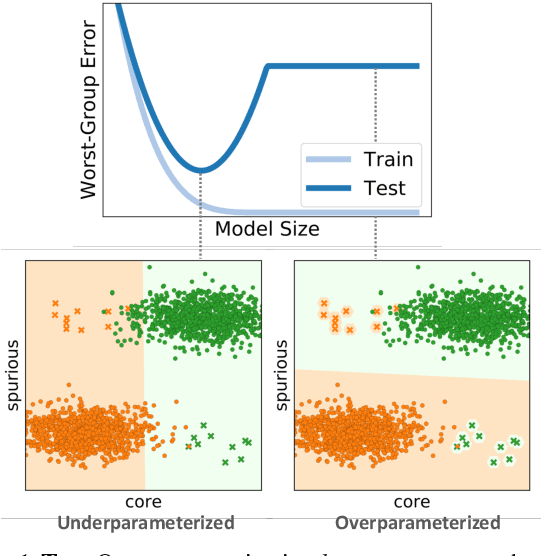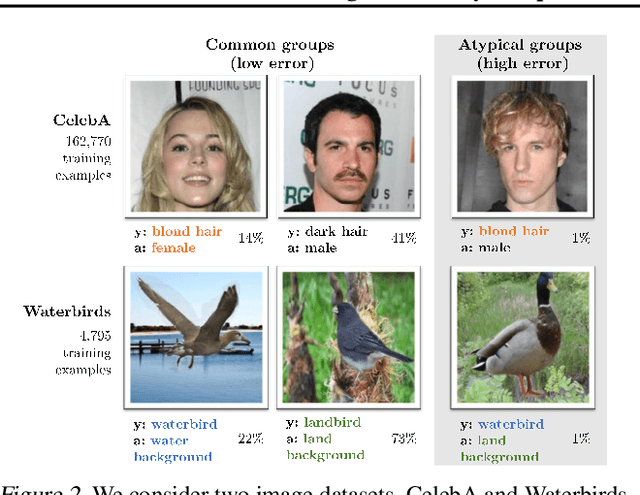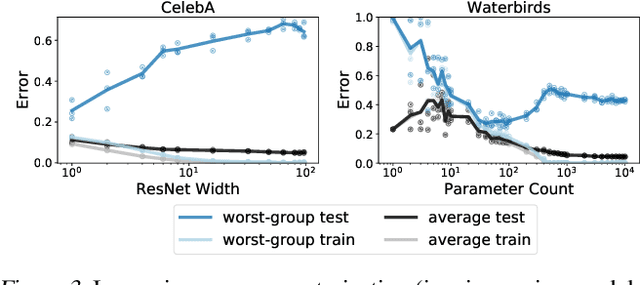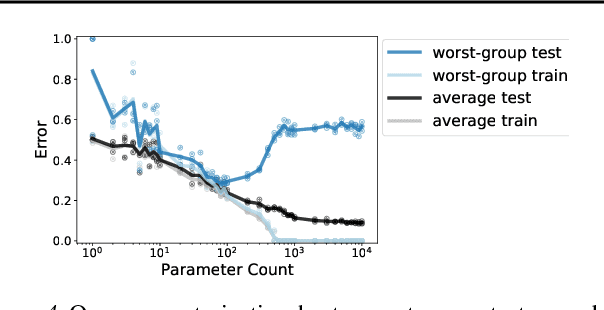An Investigation of Why Overparameterization Exacerbates Spurious Correlations
Paper and Code
May 09, 2020



We study why overparameterization -- increasing model size well beyond the point of zero training error -- can hurt test error on minority groups despite improving average test error when there are spurious correlations in the data. Through simulations and experiments on two image datasets, we identify two key properties of the training data that drive this behavior: the proportions of majority versus minority groups, and the signal-to-noise ratio of the spurious correlations. We then analyze a linear setting and show theoretically how the inductive bias of models towards "memorizing" fewer examples can cause overparameterization to hurt. Our analysis leads to a counterintuitive approach of subsampling the majority group, which empirically achieves low minority error in the overparameterized regime, even though the standard approach of upweighting the minority fails. Overall, our results suggest a tension between using overparameterized models versus using all the training data for achieving low worst-group error.
 Add to Chrome
Add to Chrome Add to Firefox
Add to Firefox Add to Edge
Add to Edge